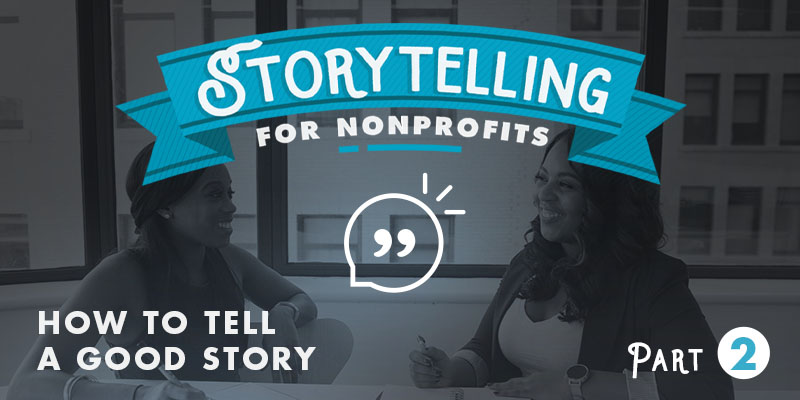As a nonprofit organization, it is important to communicate clearly. In fact, much of a nonprofit’s funding and support hinges on how clearly they can communicate the need. If you are not able to communicate the vision of your nonprofit and the difference you are making, it can impact the support of your current and future donors.
Here at TVG, we believe in the power of storytelling- we know it works! That is why we recently launched this short blog series focused on storytelling for nonprofits. Our first blog discussed the science behind storytelling, and the powerful effect that it can have. Now that we understand how this impacts individuals, let’s discuss these five easy steps from classy.org to help you jump into successfully telling your nonprofit’s story.
Step 1: Start with a character.
The first thing you need to develop a good story is a main character. The audience needs a character to follow, someone they can identify with and cheer for along the way. As a nonprofit, your main character will be someone that is impacted by your cause. A few examples of a main character for nonprofits: a struggling single mom, someone who is homeless, a child that needs a specific type of medical care, or a neglected puppy that needs a forever home.
Step 2: Establish Goals and Give Details.
Once your character is presented in your story, goals and details help set it up and frame it out. For example, is the main character trying to return to school? Get out of a desperate situation? Are they trying to rescue a friend? The goals of the main character will help move the story forward and those little details will make the character more relatable.
Step 3: Provide Conflict and a Barrier
As the story moves forward, we must show the barrier and conflict that is between the character and their goal. For example, as a nonprofit, your “barrier” will probably be of a physical, emotional or mental nature. Just remember, it doesn’t have to be a physical person or thing.
Step 4: Take Action
Finally, we get to the part of the story where the main character reaches their goal! This part of the story should show how your character defeats obstacles in their way with the help of your organization. This is the time to invite donors to become part of the story and part of the potential positive impact.
Take for example, this quick story: Lenya didn’t have access to clean water. Using funds from donors, WaterWell hired local skilled workers to install and maintain service for her town’s new water pump. Lenya has access to clean drinking water and local individuals are employed long-term.
Now that readers see how the nonprofit has worked to help Lenya reach her goal, the next step is for them to take action to help.
Step 5: End with Impact
Lastly, end with impact by sharing what you have accomplished with your character. Because your nonprofit and donors came together, explain how have lives been changed for the better. Did a child receive a necessary medical procedure? Is a struggling family now able to access healthy food for the week? It’s important to highlight the true impact of your actions.
Continue the Story!
Now, even though this isn’t an “official step” it should be! This is the time to invite donors to partner with you. They need to know that the mission continues – there is more work to be done. This is also an opportunity to welcome individuals who may need the services your nonprofit offers.
In part one and two of this series, we’ve covered the importance of storytelling and we’ve reviewed how to create a compelling story. Come back and join us for our third and final part of this series – learning how to implement a culture of storytelling at your nonprofit, and a few tips on how to get started.
Source: https://www.classy.org/blog/infographic-nonprofit-storytelling/
By Bailie Moore, Senior Account Executive at The Vandiver Group in St. Louis, Missouri
Follow The Vandiver Group on Facebook, Twitter, LinkedIn and Instagram. Read our other blogs here.

